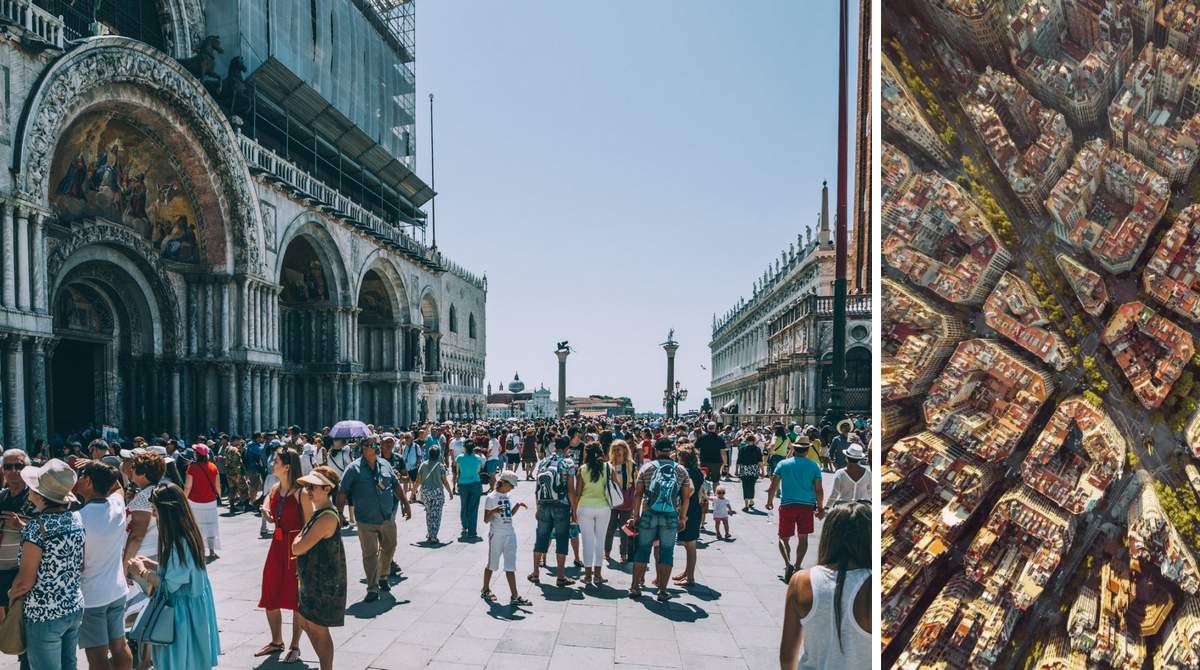Tourism brings major economic benefits to Europe, but it also causes overcrowding, housing crises, and environmental strain. Can European cities strike a balance between visitors and residents?
According to the World Travel and Tourism Council, tourism contributed €2.2 trillion to Europe’s GDP in 2023 and employed 24.5 million people — around 12% of the continent’s workforce. However, rising visitor numbers have put growing pressure on infrastructure, housing, and quality of life for locals.
What Is Sustainable Tourism?
Sustainable tourism goes beyond cutting carbon emissions — it’s about balancing economic, social, and environmental factors to ensure that travel benefits local communities without exhausting resources or damaging cultural heritage.
“Sustainable tourism means making sure visitor numbers don’t exceed what a destination can handle,” explains Anna Torres, an expert in sustainable tourism at the University of Barcelona. “It’s about managing capacity, protecting natural and cultural assets, and ensuring residents can still live comfortably.”
In 2023, the European Commission adopted its Tourism Roadmap 2030, focusing on emission reduction, local culture promotion, and fair economic distribution. But how are cities turning those principles into practice?
Amsterdam: Tackling Overtourism
Amsterdam, home to about 900,000 people, welcomes over 20 million tourists a year — a figure that has strained the city’s infrastructure and housing.
To combat this, the city launched the “Stay Away” campaign, discouraging party tourism and promoting responsible travel. In 2025, Amsterdam raised its tourist tax to 12.5% of the accommodation cost — the highest rate in Europe.
Short-term rentals on platforms like Airbnb are now limited to 60 days per year, and new hotel licenses are banned in central districts.
“We want to make Amsterdam a place to live again, not just to visit,” says city spokesperson Sophie Heer.
Barcelona: Fighting the Housing Crisis
Barcelona attracts over 12 million visitors each year, but the rise of short-term rentals has caused rents to soar and displaced many residents.
To address this, the city imposed strict regulations on rental platforms: property owners must obtain a license, and the total number of tourist beds is capped. In 2023 alone, the city closed more than 3,000 illegal apartments.
Barcelona also promotes “destination management”, encouraging visitors to explore less touristy districts to ease pressure on major attractions like the Sagrada Família and Park Güell. By 2030, the city aims to cut tourism-related carbon emissions by 20%.
“Tourists are welcome — but not at the expense of our citizens,” says Mateo Hernández, Director of Barcelona’s Tourism Board.
Venice: Protecting a Fragile Heritage
Venice, with just 50,000 residents and 30 million annual visitors, faces an immense strain on its delicate ecosystem. In 2025, the city introduced a daily entry fee of €5–10 for day-trippers to manage visitor flow and fund conservation.
Large cruise ships have been banned from docking in the historic centre since 2021, redirecting them to ports outside the lagoon to reduce pollution and canal erosion.
“Venice is an open-air museum, but also a living city,” says local official Marco Gasparini. “We must protect its uniqueness while allowing people to live here.”
The Path to 2050: Tourism That Benefits All
European cities are setting ambitious goals for sustainable tourism by 2050 — from cutting transport emissions to promoting local, seasonal products and investing in green infrastructure. Cities like Copenhagen are already leading the way, aiming to become carbon neutral by 2025.
However, challenges remain. Balancing the interests of tourists, residents, and businesses requires coordination, especially amid inflation and shifting travel habits.
“Sustainable tourism isn’t just for today — it’s for future generations,” says Torres. “If we don’t act now, we risk losing what makes Europe’s cities so special.”

